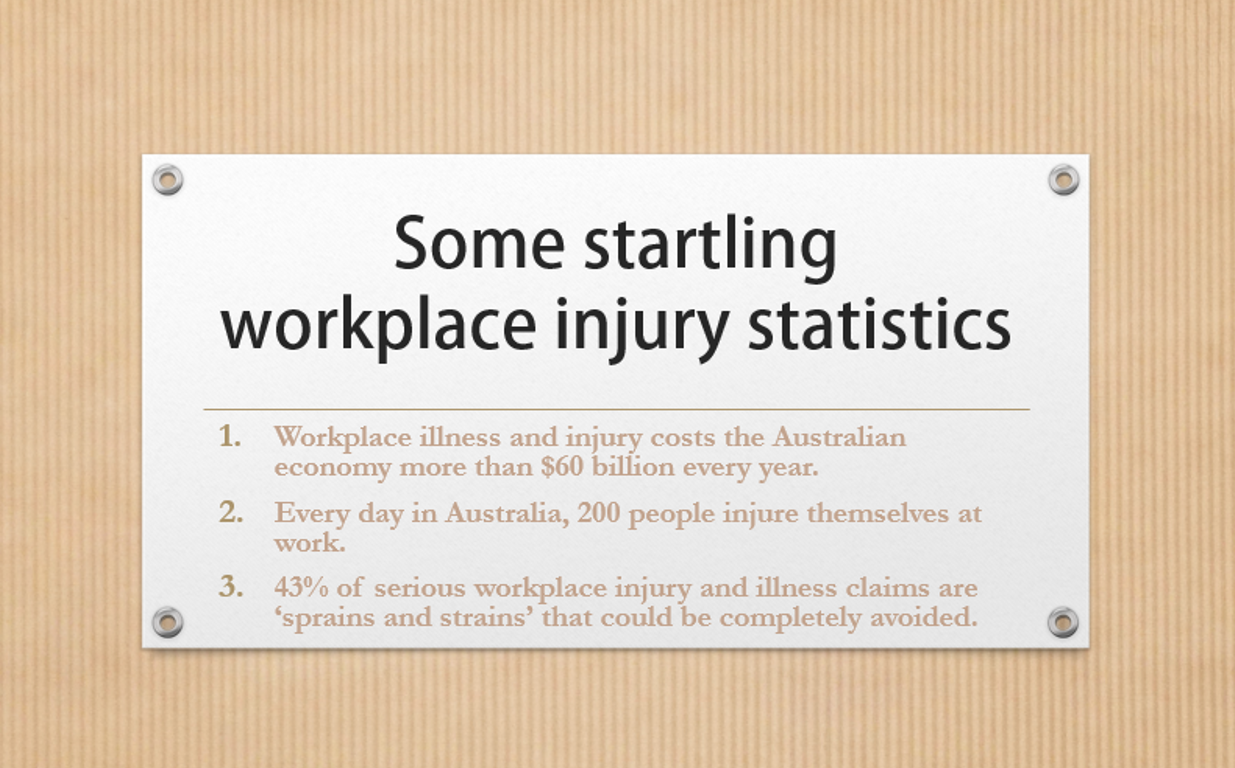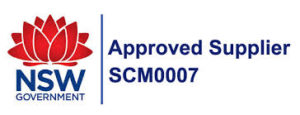Manual Handling: What are you doing to prevent almost half of Australia’s workplace injuries?
While some jobs have obvious hazards, others present dangers that aren’t so apparent. And every workplace poses risks to the people who work there.
By keeping your Manual Handling information and training up-to-date you’ll keep more your employees safer, and avoid a lot of financial pain for your business.

A third of Workers’ Compensation Claims relate to Manual Handling
‘Sprains and strains’ are usually the result of poor Manual Handling (resulting in body stress). And 32% of all Workers Compensation claims relate to Manual Handling.
It’s no surprise that these types of injuries are most common in the construction, health and community service, transport, and manufacturing industries. However, they are a concern for all businesses, across all industries. Even administration workers are at risk – typing, filing, reaching and sitting for long periods of time can adversely affect your health.
How to make your workplace safer
A proven way of helping employees understand the impact of Manual Handling is through appropriate training that encourages a safe workplace culture. Manual Handling courses work in two ways:
- Teaching workers correct techniques for assessing loads and moving them.
- Improving the way employees view their own safety, and the safety of their workmates.
It’s also important to remember that as preventable injury incidents decrease, employees often get complacent. So regular training keeps safe work practices ‘top of mind’ and can reduce your exposure to the possibility of an incident even further.

The painful cost of complacency
The cost of an incident far outweighs an investment in Manual Handling assessment, instruction, and setting up safe work practices. Data from the 2008/09 Report By Safe Work Australia estimates the cost of a single body stress injury at $109,700.
This is because it can have a huge impact on your:
• Work Cover and workplace insurance premiums
• worker morale and lost productivity
• money and time needed to recruit and replace an injured worker during recovery and rehabilitation.
Not to mention that, if the incident is severe enough, the potential to face fines for unsafe work practices.
Young workers need guidance
Statistics from the same Safe Work Australia Report also show our young workforce is most at risk. 20% of all workplace incidents involve workers under 25. Younger workers are so vulnerable because they aren’t knowledgeable and experienced in regards to potential workplace risks and dangers.
As a business, you need to support this group as they enter into your workforce, and continue to educate and help them as they progress along their career path.
How to best protect your people and business
Accidents happen, but data and anecdotal evidence shows that many are preventable – especially those that are due to incorrect Manual Handling.
The most effective way to prevent needless injuries in your workplace is when everyone has a sound knowledge of the risks they face, and how best to avoid them. That comes down to good ongoing Manual Handling training, consultation and employee co-operation.
Sources:
1. The Cost of Work-Related Injury and Illness for Australian Employers Workers and the Community 2008/09
2. Safe Work Australia Compendium of Workers Compensation Statistics 2010/11

 Safety Australia Group
Safety Australia Group